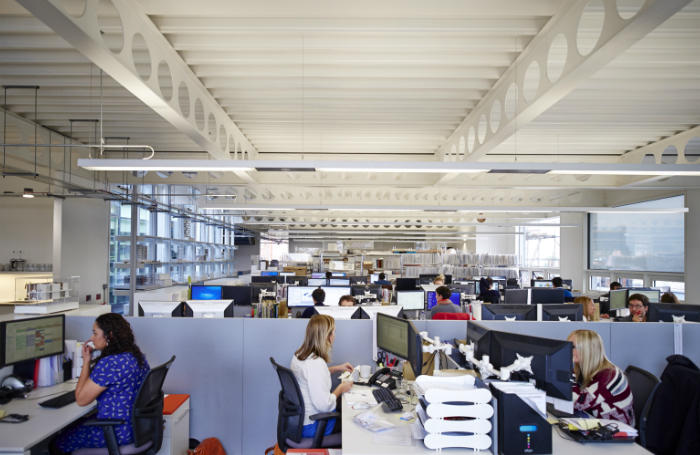The case for Post Occupancy Evaluation (POE) of buildings has many champions and few if any detractors, yet it is not easy for architects to get clients to commit to a service seen as a supplementary rather than core design service, whatever its undisputed merits.
So when AHMM was engaged to carry out a major refurbishment of two floors of a large office complex that included their own workspace, the practice seized on the opportunity to carry out a comprehensive pre- and post-refurbishment POE that could guarantee full occupier engagement.

The study, which also features as a case study in the RIBA report ‘Building Knowledge: Pathways to Post Occupancy Evaluation’, covered everything from energy consumption and indoor environmental quality to cost and productivity metrics and a wide-ranging examination of occupant satisfaction.
Craig Robertson, Sustainability Lead at AHMMM and a member of the RIBA’s Sustainable Futures Group, can now report that far from being just a worthy exemplar of what POE should be, the results of the study are being actively promoted directly to potential clients as a case study and as an illustration of what AHMM could do for them.
‘We have been using our own study to challenge client expectations by telling them how productive and contented their building occupants can be, how low energy their project can be,’ says Robertson.
Since the original POE exercise, AHMM has gone further and has been using energy monitoring software, monitoring the way its own building is managed, with results that have sometimes challenged AHMM’s own expectations.
Bringing it all together allows AHMM to present a comprehensive, working building model to clients, complete with projected operational data of every aspect of a client’s proposed refurbishment and how occupants can be expected to respond.
‘Rather than presenting regulatory compliance, we can present an actual building model. Our own POE study has also given us a template for the ideal data set we would want to get from our new buildings,’ says Robertson.
Lessons learnt on AHMM’s own POE study at their Morelands office in Clerkenwell included insights into how combining environment monitoring with surveys of occupant perception can give a better understanding of the impact of behaviour on building performance.
Another key insight is the understanding that worker satisfaction and productivity is highly relevant when building running costs are dwarfed by the investment in personnel.
Robertson says that having the operational data set from their own POE study has also fed into the way the practice talks to its own design teams and engineers, with much informed discussions at the design stage.
‘It is helping us to work more collaboratively across the design team, and I include the client in the design team,’ says Robertson.
Recent RIBA Benchmarking surveys show that only around 10% of RIBA Chartered Practices offer POE as a service, despite its potential as demonstration of the value of good design.
AHMM have completed POE on several school projects, although the main focus of the practice of late has been commercial offices.
Robertson says the highly visible role played by its own Morelands POE study in winning over clients for commercial office refurbishment offers one further dividend by giving AHMM the perfect opportunity to tell the client at the outset that one of the things they would like to do on the project, of course, is POE.
Thanks to Craig Robertson, Head of Sustainability, Allford Hall Monaghan Morris.
by Neal Morris.
Published on 27 April 2017.









